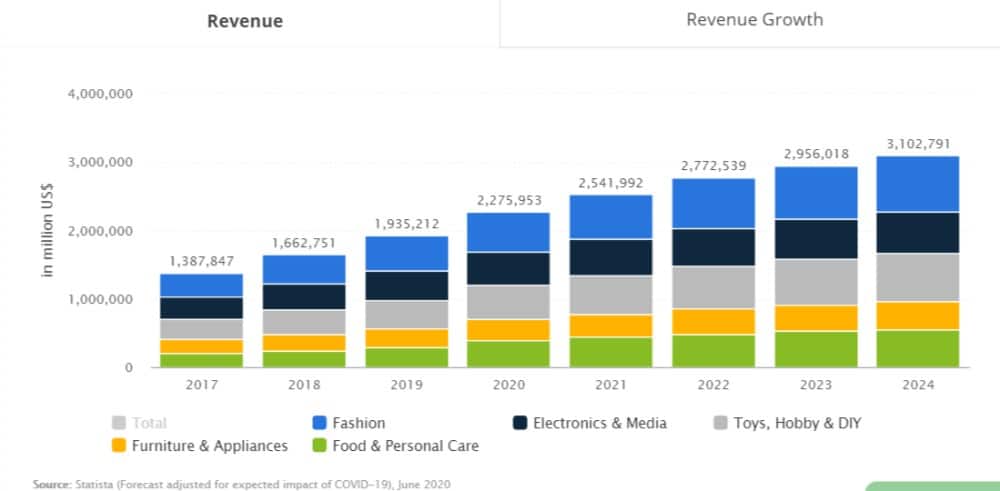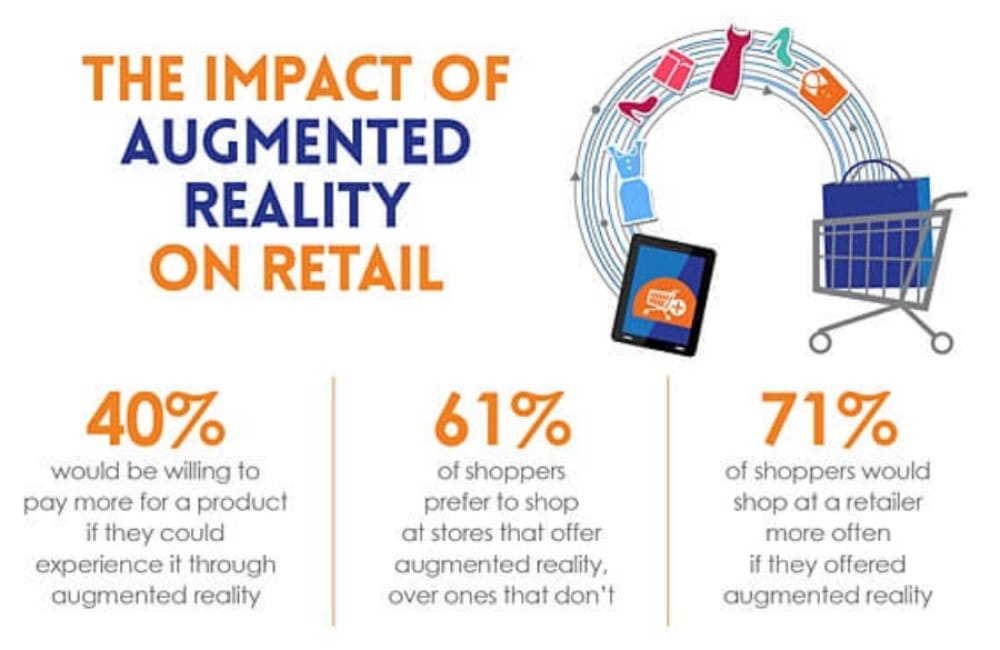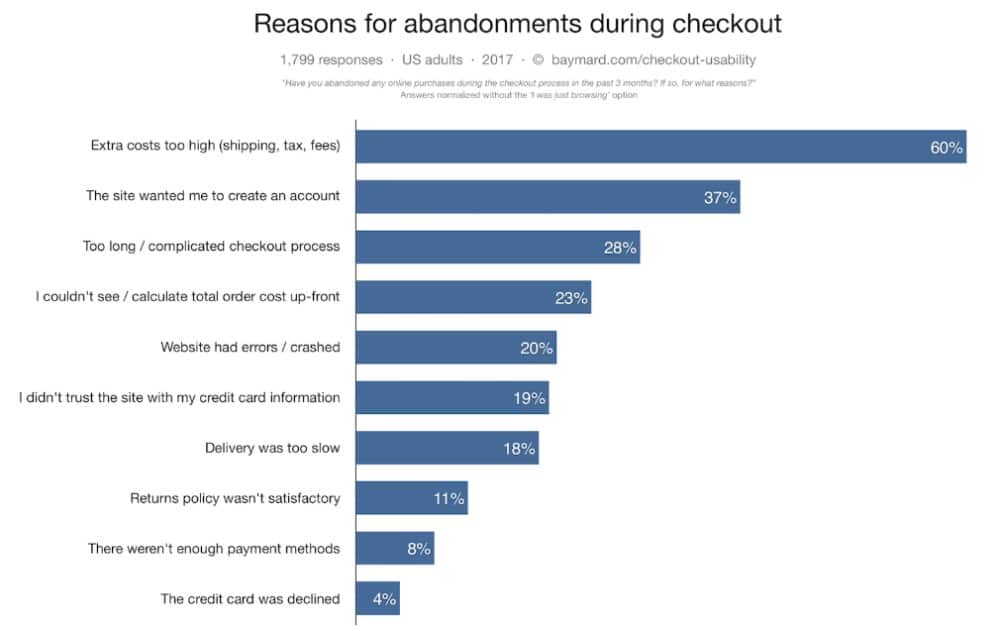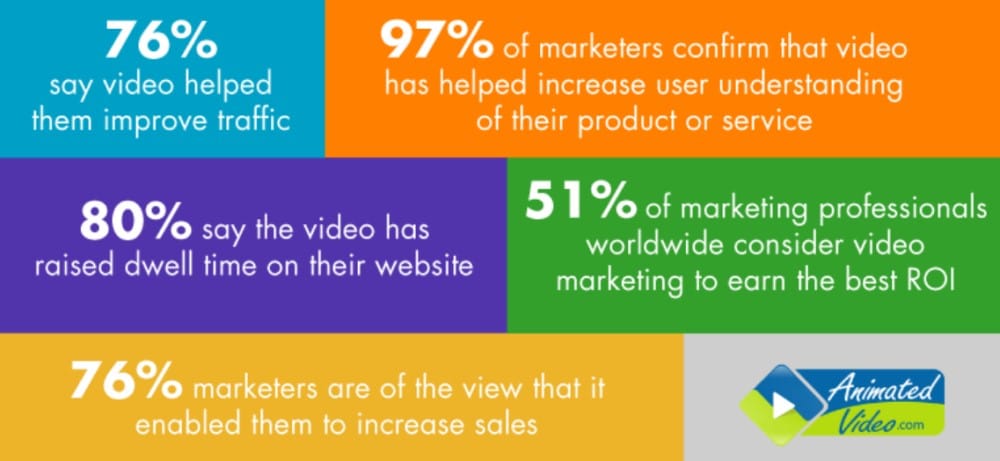The modern world is faster moving than ever before. Digital transformation has taken hold across all fields, sectors, and industries. How we live, shop, and entertain ourselves is ever-changing. The changes are often driven by new technology and digital trends.
The ecommerce sector is one of the best examples of a niche where technology holds sway. It’s only the comparatively recent rise of the internet that even made online shopping an option. It’s far more than merely an option today, however. The ecommerce market is vast and continues to grow.


Image Source: Statista
Global ecommerce revenue is predicted to reach $2,275,953m in 2020. It could grow to as much as $3,102,791m by 2024. It is, by all definitions, a booming industry. If you’re trying to make your mark in the sector, you need to know what trends will shape its future.
We’ve pinpointed ten such trends that you must look out for in 2020 and beyond. They include changes in tech and attitudes covering all the following areas:
- Augmented Reality (AR)
- Artificial Intelligence (AI)
- Big data & personalization
- M-commerce
- Payment & fulfillment
- Headless ecommerce platforms
- Video for sales & marketing
- Subscription services
- Consumer expectations away from product & price
- B2B ecommerce & DTC
The Covid-19 Elephant in the Room
The growth prediction above accounts for the impact of the global Covid-19 pandemic. It suggests, then, that the ecommerce sector will withstand the economic uncertainty caused by the crisis. It would be remiss, though, not to reflect on Covid-19’s short and longer-term impacts. Especially if we’re to talk about future digital trends.
No one could have predicted the events of the second quarter of 2020. The world changed, and we may not know the full implications of the crisis for years. Covid-19 and its associated lockdowns decimated many national economies. In the UK, for example, the economy shrank more than 20% in April 2020.
Such an economic squeeze will undoubtedly impact small businesses. That’s whether they exist in brick and mortar locations or the digital world. The nature of ecommerce, though, makes the sector more resilient—both to coronavirus and the subsequent lockdowns.
In China, for instance, ecommerce boomed during the Covid-19 pandemic. Online sales rose by 8.6% in the first four months of 2020. The shift to shopping on the net has also continued post-lockdown. Despite general uncertainty, then, there’s still scope to look at trends in ecommerce with some optimism.
Top Trends Defining the Future of Ecommerce
Predicting the path e-commerce may take is tricky at the best of times. The current global economic climate makes things even harder. The following digital trends, though, have already started to take root. We’re going to take a look at them in turn and explain why you need to pay them close attention. They may, after all, come to define the sector in 2020 and beyond.
1. AR to Revolutionize Shopping From Home
Let’s begin our digital trends with an area of tech that’s growing apace. Augmented reality (AR) has been getting people across niches excited for a number of years. The potential of the technology is near-limitless. It’s already made a splash in healthcare, education, and more. In ecommerce, too, AR is developing into an innovative and beneficial solution.


Image Source: spaceotechnologies
Ecommerce has many benefits over traditional retail. Convenience and mobility are two of the most notable, and help explain the sector’s meteoric rise. Online shopping, though, has always had one significant downside. That is that the customer journey always has – by necessity – been more limited.
When shopping online, consumers can’t experience items before they buy. They can’t pick them up, feel them, or see what they look like on or in place. Customers online must rely on photographs, product descriptions, or perhaps videos. Or, at least, that’s how it used to be.
AR is a game-changer in this regard. Visual overlays or other AR tools help close the gap between online and traditional retail. Consumers can now see what a new hair color would look like or how a sofa may fit with the décor of their lounge.
The benefits of AR experiences for consumers are apparent. Improving customer experience, too, is a big win for retailers. What’s more, if customers can better judge products before buying, rates of returns will fall. That’s another plus for ecommerce firms. AR, then, is a digital trend in ecommerce that’s set to blossom in 2020 and beyond.
2. Broader, More Intelligent Application of AI
AR isn’t the only area of technology to get people excited in recent years. The movement of artificial intelligence (AI) from sci-fi to everyday reality is also getting plenty of attention. The range of processes and tools that fall under the AI umbrella also span many industries.
Machine learning and natural language processing (NLP) are two areas of AI most likely to impact ecommerce. Machine learning is the capability of algorithms to ID patterns and make predictions from data. NLP is the growing ability of tech to understand and contextualize human communication.
The potential for each of those strands of AI in ecommerce is vast. It’s also far from fully understood. As the tech matures, broader and more intelligent applications are sure to arise. All those will aid online retailers. They can help them to understand better the customers who they’re never able to meet in person.
AI, then, is another trend that’s growing due to its potential to enhance customer experience. Precisely how it can do so varies. Three essential areas where AI may have the most significant influence warrant further discussion. In fact, you can look at them as another trend in their own right.
3. Big Data, Personalization & Chatbots
Society has never generated as much data as it does today. Increased connectivity and the growth of the Internet of Things (IoT) mean we’re truly in the era of big data. Having access to such an abundance of data is excellent news for businesses. Only, however, if they’re able to analyze and utilize it. That’s where AI – and particularly machine learning – comes in.


Image Source: Science Direct
AI-driven algorithms can get trained to recognize patterns in consumer behavior. Such insights help ecommerce firms in a range of ways. They can better predict altered demands for products, for instance. On an individual level, too, businesses can deliver increasingly personalized experiences.
With data analytics powered by machine learning, a firm can ID what truly matters to each customer. They can then personalize their interactions with the consumer accordingly. That means incentive marketing can get tailored to a customer’s needs and desires.
In the customer service area of ecommerce, NLP and chatbots are a significant trend. Visit any modern ecommerce site, and you’re likely to see a chatbot. It’s that widget that pops up, asking you if you need help. Thanks to AI and NLP, much of the assistance rendered comes without human influence.
NLP-powered chatbots can recognize and – crucially – understand customer queries. They’re able to offer a range of responses. That’s everything from personalized product recommendations to shipping information. Brands, then, can provide a personal service without having to expand their workforce.
4. Further Growth of M-Commerce
Modern society’s reliance on smartphones is showing no signs of abating. More than three billion people around the world now own and use a smartphone. Increasingly, our mobile devices are our first port of call for a wide range of activities. From checking the spelling of a word to seeking customer support, it’s to our phones that we turn first. The spread of 5G is only going to accelerate the trend.
Shopping, too, is something we more frequently do on our phones. Business Insider predicts that shopping on mobile devices (or M-commerce) will account for 44% of all ecommerce by 2024. It’s critical for online retailers to meet consumers where they are. That means optimizing their sites and service for mobile users.
An ecommerce site that’s buggy or slow to load away from a desktop is no longer an option. Firms must ensure all customers can buy from them when and how they please. You can expect, then, more specific mobile sites and progressive web apps (PWAs) from online retailers.
5. More Payment & Fulfilment Options
Ecommerce firms increasingly differentiate themselves via processes behind the buy button. That means what they offer to – and do for – customers after a product’s added to a shopping cart. Two critical areas in this regard are the payment and fulfillment options that a business provides.


Image Source: Baymard Institute
Cart abandonment is a big deal in ecommerce. As you can see above, there are lots of reasons why customers abandon filled shopping carts. They include extra costs to ship, a lack of payment methods, and not trusting a site with card details. To tackle these issues, expect firms to broaden their range of payment and fulfillment options.
On the payment side, acceptance of e-wallets is increasingly expected by consumers. Due to their experiences with larger firms, too, customers expect frictionless purchases. That means not having to re-enter card details for each new purchase. Checkout processes must be as swift and intuitive as possible.
New fulfillment options are also important for consumers. Many like to save shipping costs via a buy online, pickup in-store (BOPS) alternative. This, though, is a trend likely to get shaken by the present pandemic. Meanwhile, contactless delivery is a mode of fulfillment that many brands have had to adapt to in recent months.
6. Headless Ecommerce Platforms
Digital trends in ecommerce aren’t all about customer-facing aspects of the sector. The setup and design of the back-end elements of ecommerce platforms are also evolving. Many brands have started to adopt a headless approach.
Headless ecommerce is when a brand separates the front and back ends of their online architecture. What consumers see and interact with is detached from the solution that handles retail functionality. Such an approach delivers a few significant advantages.
Your customer-facing site doesn’t need to account for practicalities like order management. Instead, it can focus on delivering a seamless customer experience. Thus, it’s easier to introduce personalization, AR, AI, and more. What’s more, you can tailor separate frontends for different countries or markets.
7. Innovation in the Use of Video
One of the simplest digital marketing tricks going is to introduce a video to any kind of campaign. Marketers have long understood the power of video as a visual medium. Consumers take in far more information from a video than from any other form of media. They’re also proven to retain details for longer.


Image Source: Animated Video
Ecommerce companies have been a little slower to adopt video. That’s all set to change, however. The benefits of video demand it. Using video content in marketing campaigns or on websites and apps delivers results. Campaigns with videos get consistently higher click-through rates (CTRs) than those without them. Video, too, is the most consumed form of content on social media.
Videos on ecommerce sites or apps are also beneficial. Explainer videos can help sell the features and upsides of products or services. Streaming videos on home or landing pages is also a great way to capture the attention of visitors. In the years to come, ecommerce brands look set to explore many avenues to make their content more visual.
8. Subscription Services Continue to be a Win-Win
In 2020 and beyond, ecommerce will be far more than an online version of traditional retail. Many top online brands are already leveraging a range of different business models. The subscription-based alternative is one of the most popular.
Consumers have shown an affinity for getting products or packages delivered regularly. The benefits for them include convenience, personalization, and cost-efficiency. Subscription-based models also deliver significant advantages for retailers.
When delivering a subscription service, an ecommerce brand reaps new rewards. The perks are often similar to those associated with SaaS firms. Businesses know more readily, for instance, the demand they must satisfy each month. That allows for greater efficiency in inventory management and the savings which follow.
What’s more, with subscriptions, businesses can place a greater focus on customer retention. Keeping – and up or cross-selling to – existing subscribers is less costly than earning new custom. A healthy subscription list, then, may look ever more attractive to ecommerce brands.
9. Consumers Judge More Than Product & Price
We’ve never been better informed as consumers. The impact businesses and their supply chains have on the world is no longer a secret. As such, customers expect more from brands than to merely deliver a product at a reasonable price. They’re also interested in the values and principles which to which companies adhere.


Image Source: Global Web Index
Sustainability is a prominent example. Consumers now expect businesses to make strides towards operating in a greener manner. That might mean reducing packaging or adopting electric or hybrid delivery vehicles.
Social responsibility is something else that modern consumers expect of brands. During the recent Covid-19 crisis, firms that laid off workers unfairly faced condemnation. Brands on mass, too, recently showed solidarity with the Black Lives Matter movement.
10. Growth in Both B2B Ecommerce & DTC
The success and growth of B2C ecommerce have knock-on effects, too. As shopping online is now a part of most of our everyday lives, that mode of doing business is also starting to expand. Increasingly, ecommerce is also getting seen as a channel for other brands to exploit.
B2B firms, for instance, are starting to explore ecommerce sales. Global revenue in that area is predicted to exceed $1 trillion comfortably before the end of 2021. The trend will only continue as younger workers graduate to positions of responsibility in B2B brands.
Manufacturers, too, are noticing the advantages of ecommerce. Rather than rely on traditional distribution, many are now turning to direct to consumer (DTC) sales. With an ecommerce site and their reputation, they can cut out the middlemen of retail. The success of brands like Nike in this regard is only going to encourage other firms to try the same thing.
Tech, Consumer Demands & Global Uncertainty to Shape the Future of Ecommerce
Stand still in the world of business, and you get left behind. That’s never truer than in the ecommerce sector. Selling online has undergone many changes since it began only a few decades ago. Many factors ensure the field won’t remain static in the future, either.
Developments in tech and new consumer expectations – not to mention a global pandemic – will all serve to reshape the industry. The above trends are only a few of the broader changes you can expect in the years to come. Now that you understand them, though, you’re well placed to take advantage. Doing so is the only way to stay ahead of your rivals.
Originally published Feb 28, 2020, updated Dec 30, 2022


